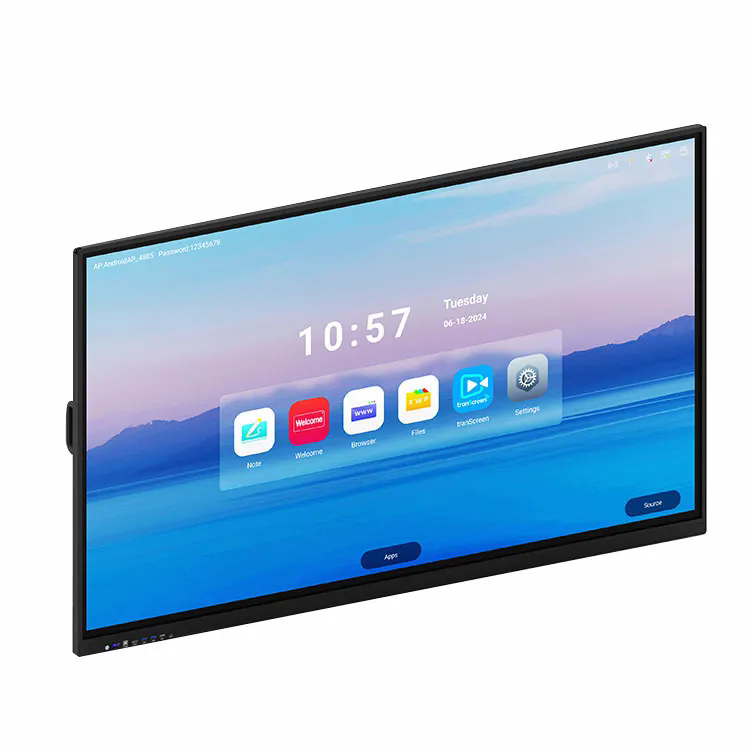Exploring the Future of Interaction: Infrared Touch Vision Displays
2024-11-01
In an era where technology continues to evolve at an unprecedented pace, infrared touch vision displays are making significant waves in various industries. Combining the principles of touch technology with advanced display features, these devices are transforming the way we interact with screens. In this blog, we will delve into what infrared touch vision displays are, their applications, benefits, and the future they promise.
What is an Infrared Touch Vision Display?
An infrared touch vision display is a type of touch-sensitive screen that uses infrared technology to detect touch input. Unlike traditional touchscreens that rely on capacitive or resistive technologies, infrared displays utilize a grid of infrared light beams that, when interrupted by a finger or object, register the touch. This method allows for a more responsive and durable user experience, as it does not rely on direct contact with the screen surface.
Infrared touch vision displays are characterized by their ability to provide multi-touch functionality, making them ideal for applications requiring simultaneous interactions, such as gaming, presentations, and collaborative work.
Key Applications
1. Retail and Advertising: Infrared touch displays are increasingly used in retail environments, where they serve as interactive kiosks for product information, promotions, and customer engagement. Their ability to withstand heavy use and provide a responsive interface makes them an excellent choice for high-traffic areas.
2. Education: In classrooms, infrared touch vision displays facilitate interactive learning experiences. Teachers can engage students with dynamic lessons that allow for real-time interaction and collaboration, fostering a more engaging educational environment.
3. Healthcare: In medical settings, these displays are utilized for patient check-ins, information kiosks, and even in operating rooms where hygienic and touch-free interaction is essential. The durability and reliability of infrared touch screens ensure they can withstand the demands of a busy healthcare environment.
4. Industrial Applications: In manufacturing and logistics, infrared touch vision displays are employed in control panels, machinery interfaces, and inventory management systems. Their robustness and ability to function in various environments make them ideal for industrial use.
5. Transportation: From interactive information displays in airports to touchscreen interfaces in vehicles, infrared displays are revolutionizing how passengers interact with transport systems. They provide easy access to information and services, enhancing the overall user experience.
Benefits of Infrared Touch Vision Displays
1. Durability: Infrared touch displays are built to last. Their design minimizes wear and tear, making them resistant to scratches and damage from repeated use. This durability is crucial for high-traffic areas and environments with rough handling.
2. Versatility: These displays can be integrated into various devices, from large screens used in public spaces to smaller, portable devices. Their adaptability makes them suitable for a wide range of applications across different industries.
3. High Sensitivity: Infrared technology provides precise touch detection, allowing for quick and accurate interactions. This sensitivity enhances the user experience, making it ideal for tasks that require precision.
4. Multi-Touch Capability: Infrared touch vision displays support multi-touch functionality, enabling multiple users to interact with the screen simultaneously. This feature is especially beneficial in collaborative environments, where teamwork and communication are essential.
5. Hygienic and Touch-Free Options: As cleanliness becomes increasingly important, particularly in healthcare and public spaces, infrared touch technology can offer touch-free options. Users can interact with displays without physically touching the surface, reducing the spread of germs.
The Future of Infrared Touch Vision Displays
As technology continues to advance, the future of infrared touch vision displays looks promising. Innovations in display technology, such as higher resolution screens, improved sensitivity, and enhanced integration with other technologies (like augmented and virtual reality), will further expand their capabilities.
Moreover, as industries increasingly prioritize user experience, the demand for intuitive and interactive displays will continue to grow. Infrared touch vision displays are well-positioned to meet these needs, providing seamless and engaging interactions across various platforms.
Conclusion
Infrared touch vision displays represent a significant leap forward in touch technology, offering a unique blend of durability, sensitivity, and versatility. As they find applications in diverse fields such as retail, education, healthcare, and more, these displays are reshaping how we interact with information and services.
As we embrace this technology, we can anticipate a future where touch interfaces become even more integral to our daily lives, enhancing our interactions in ways we are just beginning to imagine. Whether in a classroom, a retail store, or an industrial setting, infrared touch vision displays are paving the way for a more connected and interactive world.



